Collecting "Apistogramma sp. Ruth" = ???
In October 2009, I visited the Peruvian Amazon again, exploring
dwarf cichlid habitats and collecting fish ( among other things ).
This time I had the pleasure of having Mark Breeze (Microman) accompanying me.
From the jungle capital Iquitos, we carried out several expeditions to
examine different biotopes, fish and their habitats.
One of these expeditions was just a short boat trip across the Rio Itaya,
from the city of Iquitos.
Some photos of a fish a fisherman had sent me earlier. motivated this short boat trip.
He thought his fish was a new species, and had given it the name
Apistogramma sp. "Ruth", named after a member of his family.
He had found the fish just outside Iquitos.
In Iquitos, Peru
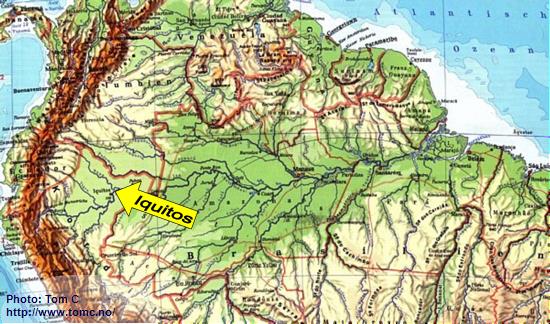
In October 2009,
I was in Iquitos,
Peru, again.
This map shows where it's located,
in the Peruvian Amazon:
The fish
This is one of the pictures the fisherman had sent me before I went to Iquitos this time:
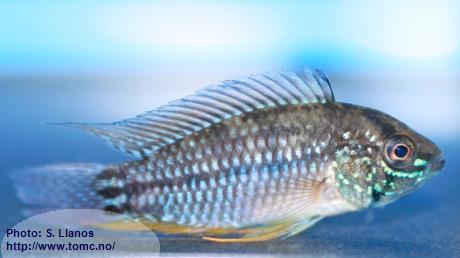
Nice fish, isn't it!
At the end of our stay in Iquitos in 2009, we met the fisherman.
He brought some of the actual fish, and they looked like this in his bag:
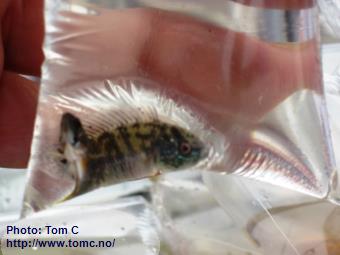
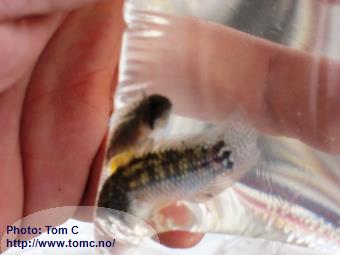
Collecting
The same day we hired the fisherman to take us to the place where some friends of him
had found the fish.
It was just a very short boat trip across the Rio Itaya, from Iquitos.
The light green circle shows the area where the fish had been found:
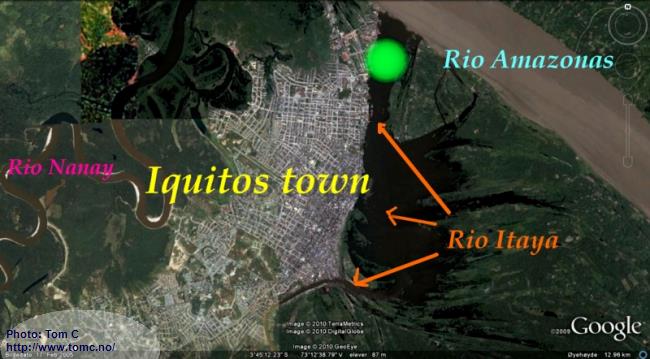
We hired a motor taxi, and went to find the fish.
This part of Iquitos has a lot of timber industry, but also some houses for families.
Outside the house of the people who had found the fish, we met their two daughters, dressed up in their school uniforms:
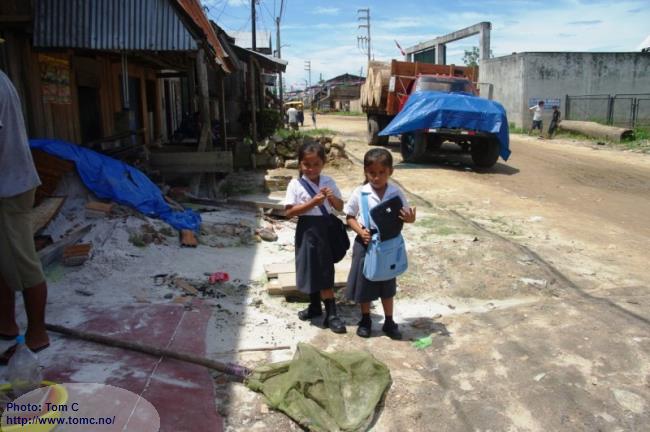
We had a hard time to manoeuvre their boat out:
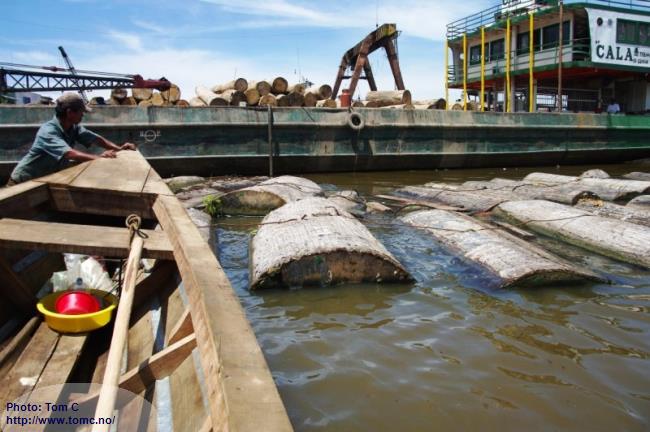
We all had to help, to push all this giant timber out of the way:
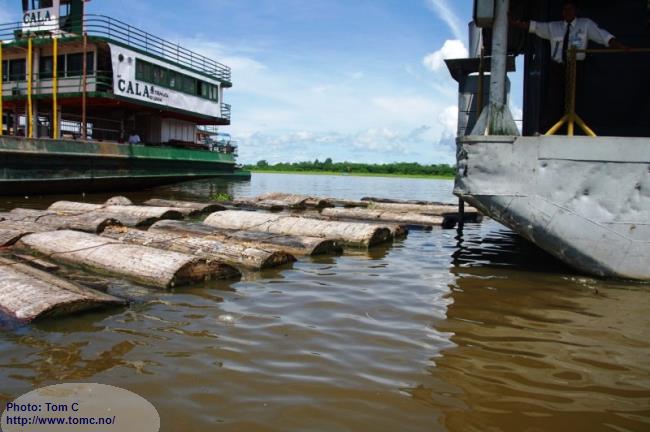
But at last, we could enter the boat, fill some fuel, and cross the Rio Itaya
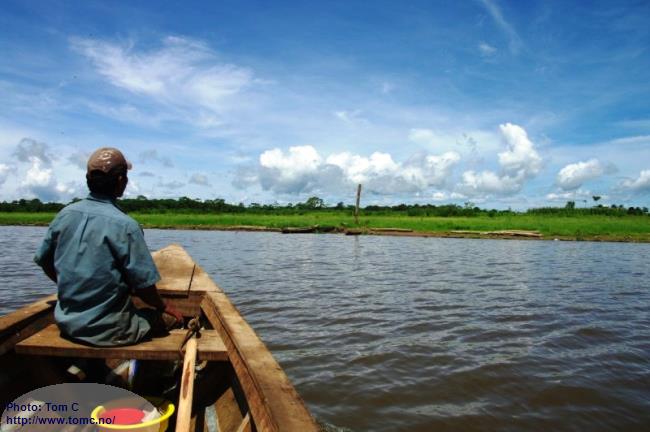
This area is completely over flooded during the high-water season:
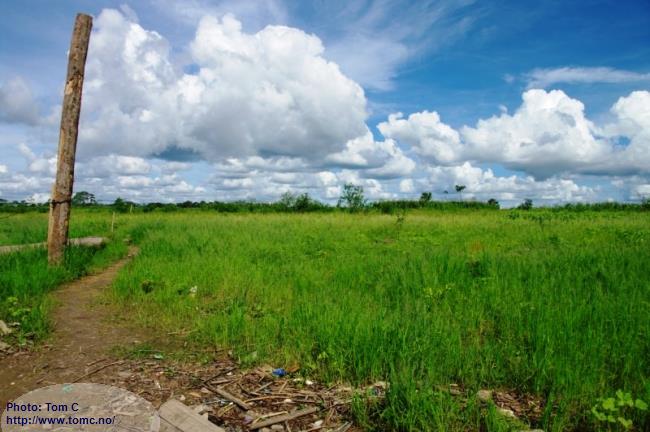
This was at the end of the dry season. It was a long time since the high-water season, and the amounts of rain the last month had been negligible (even if it rains a bit almost every day).
At this very hot day, the air temperature was around 35°C (95°F).
Just a few hundred meters from the shore, this restwater pool was almost dried out:
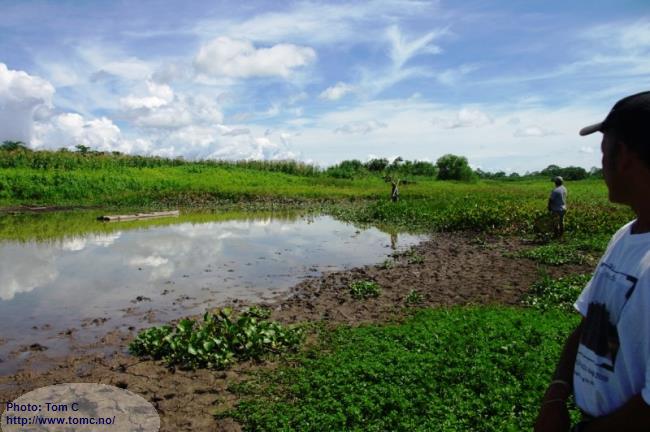
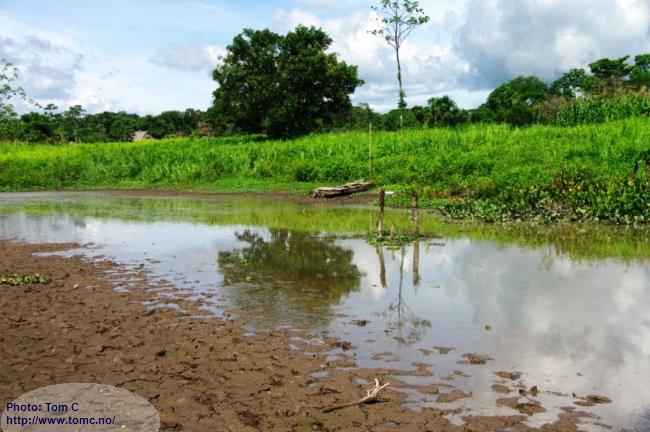
It looked like all the fish were dead. The whole area stinked like he....., and the water was pollutinated and filled with dead, rotten, stinking fish....
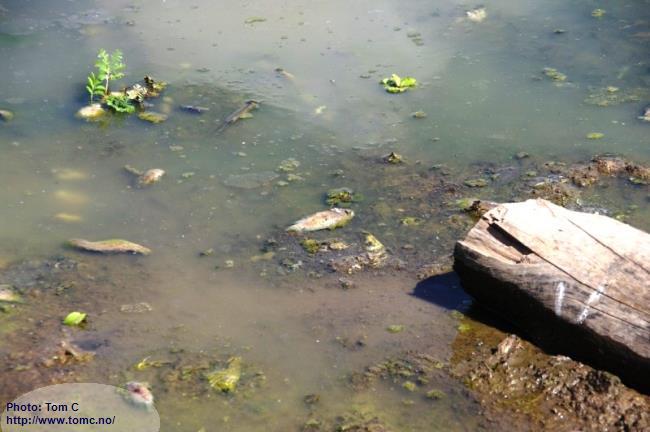
No wonder the vultures recognized the smell of food:
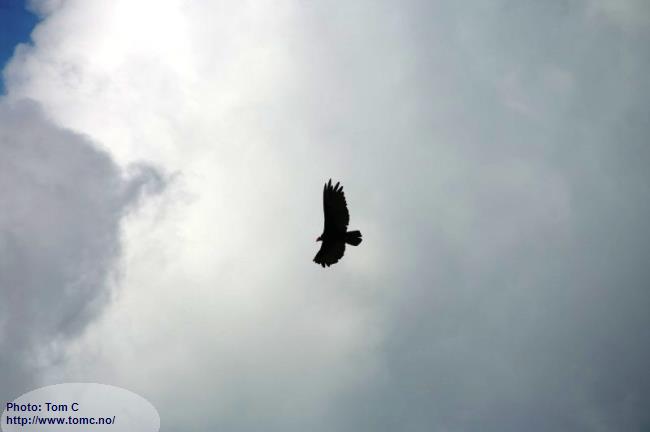
The water:
pH: 7,01
Conductivity: 758 microSiemens/cm (!)
Temperature: 36,2 °C (96,8°F). !!!
Could anything live under these conditions?
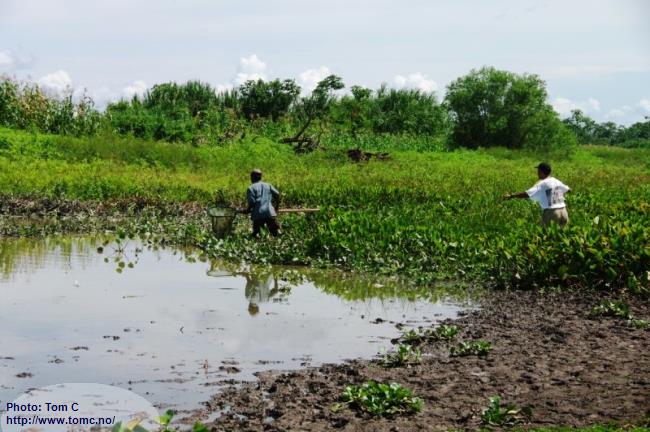
Among the Water Hyasints, with their beautiful flowers, the water might have been a
little bit cooler, since the plants gave shadow to the stationary water
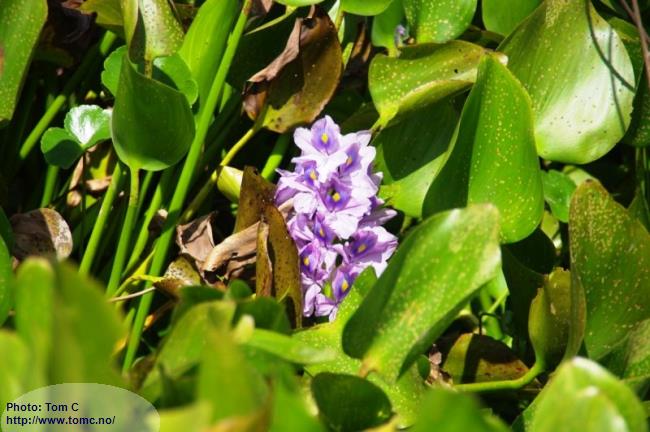
And in the muddy, shallow, stinking water among the plants, our local guides found fish:
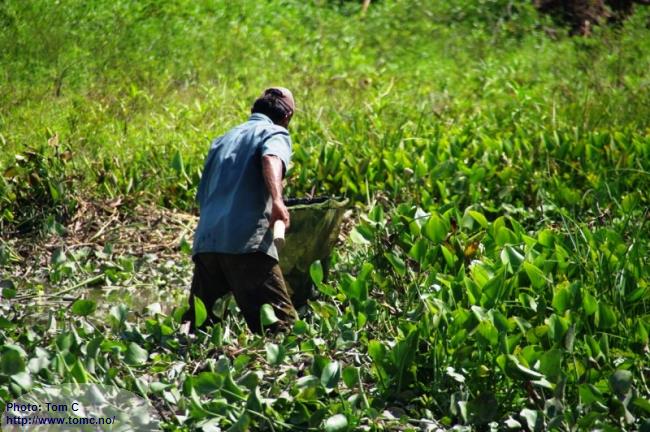
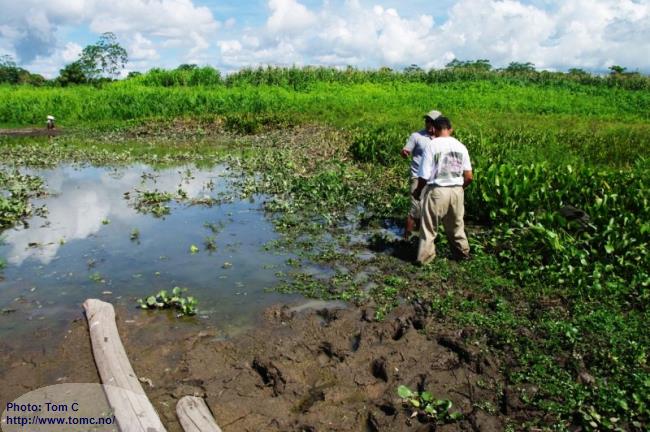
Lots of fish:
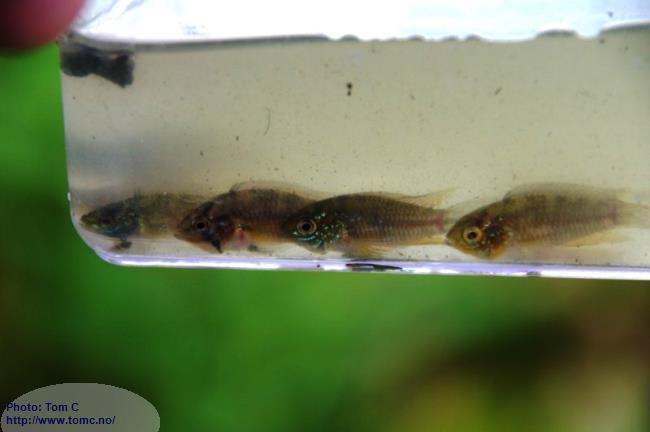
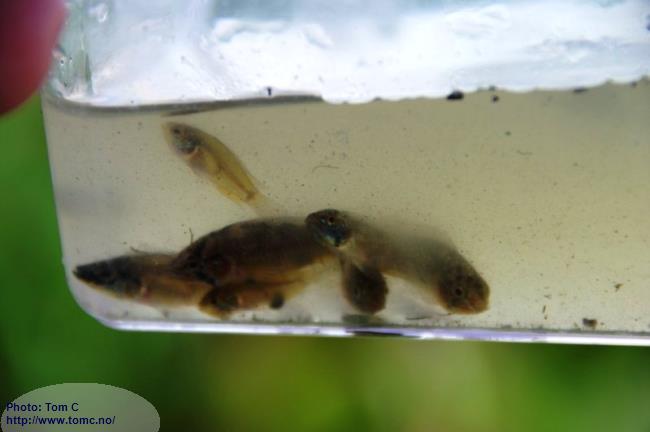
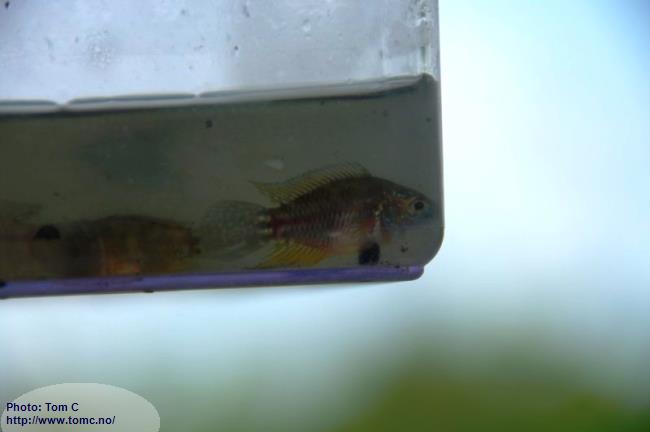
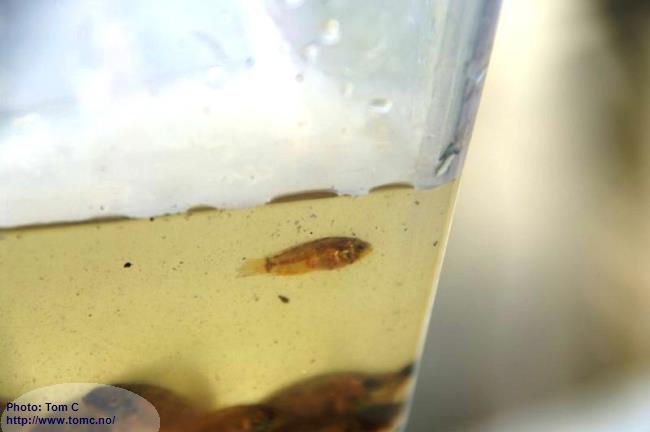
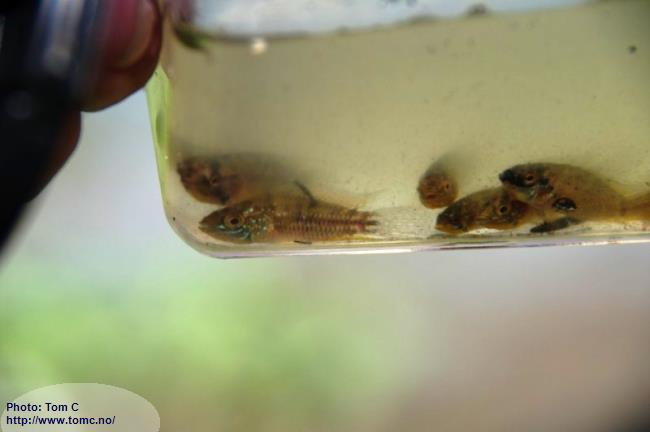
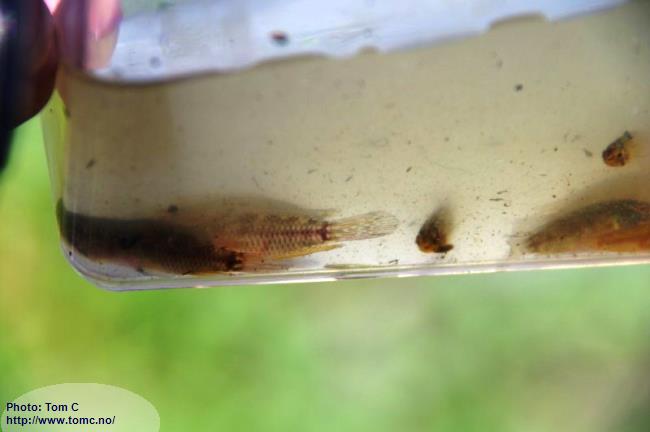
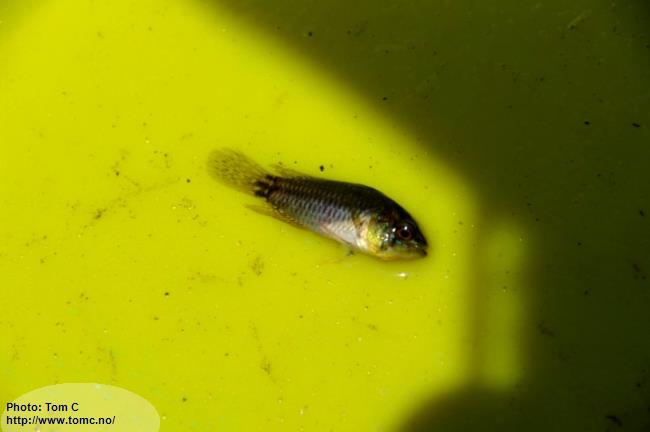
This was the only fish of a different species we found alive.
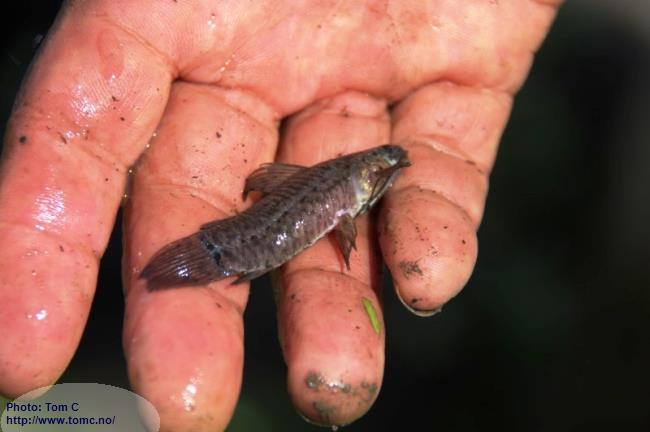
Then; back to the boat:
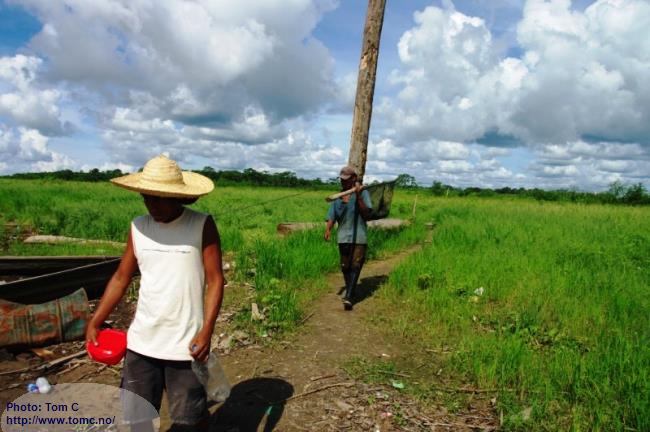
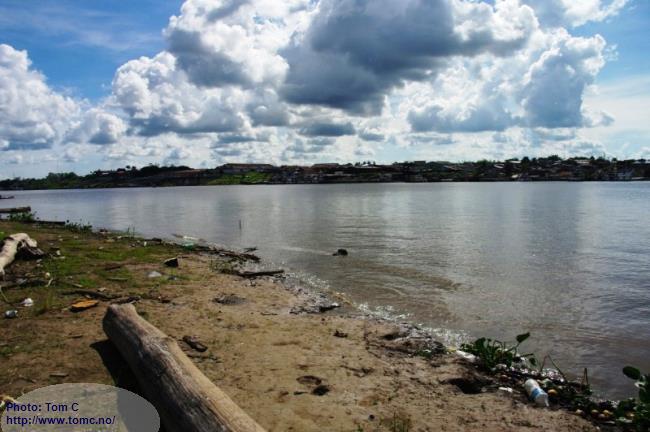
The city of Iquitos in the background
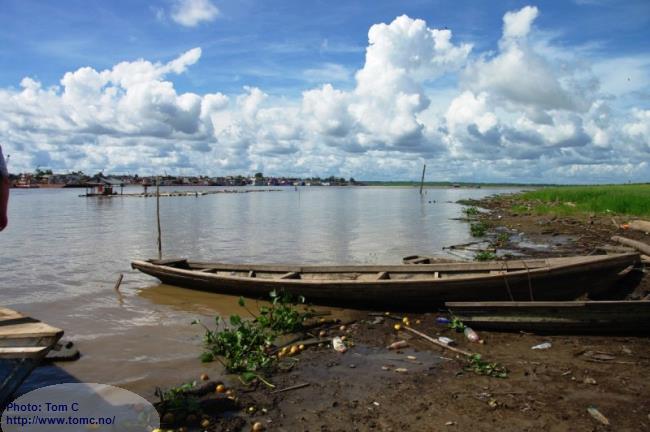
"The well seasoned and cultured traveller" got into the boat 
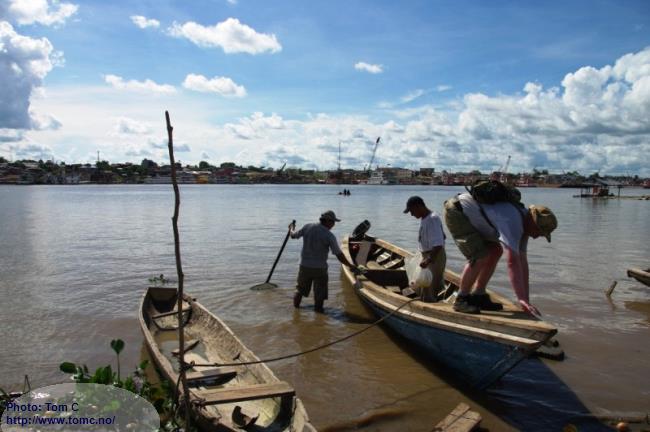
and in 15 minutes, we were back in Iquitos
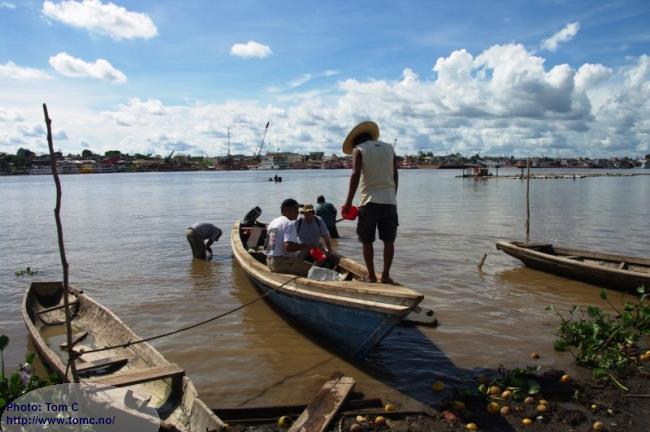
Which species?
A dead specimen gave us a good opportunity to see and count the number of hard spines
in the anal fin of this fish.
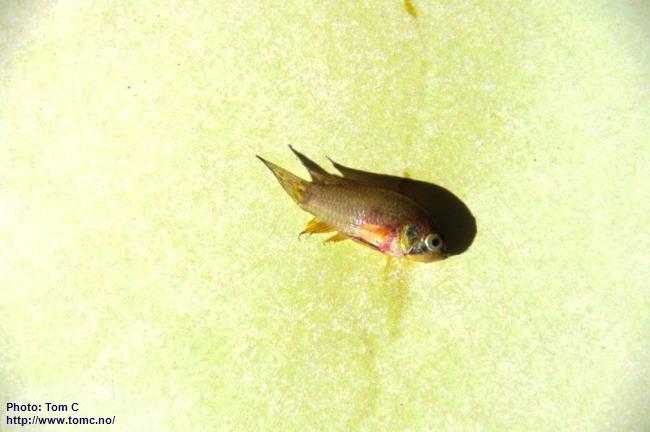
There seem to be 7 hard spines and 4 soft (split) spines ......
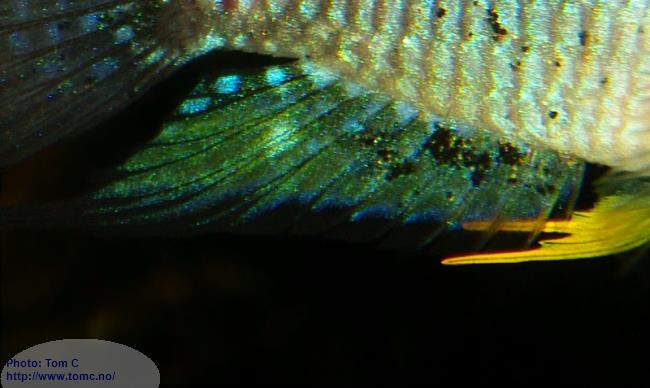
The fish is obviously Apistogrammoides pucallpaensis.
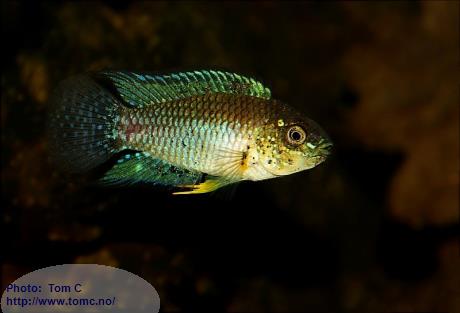
One of the wild fish in one of my tanks, after I brought it back home to Norway:
It might be an unusual color form of this species.
This is the same species; some wild fish I collected in the Rio Ucayali-drainage, Lago Tamara, in the National Reserve of Pacaya Samiria, in 2005:
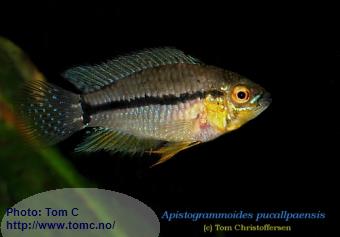
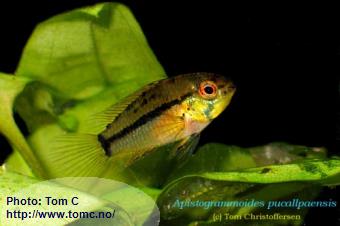
Usually I try to give the fish I collect in the wild, the same conditions in my tanks as in the wild.
I do NOT keep these fish in similar conditions as in the wild!
In soft water with a pH around 6, they now thrive well.
# # #
Since this was our last expedition this time, we were soon preparing for the trip home ....
# # #
Thanks to my very good friend, Sergio, who helped us with everything !
http://apisto.sites.no/